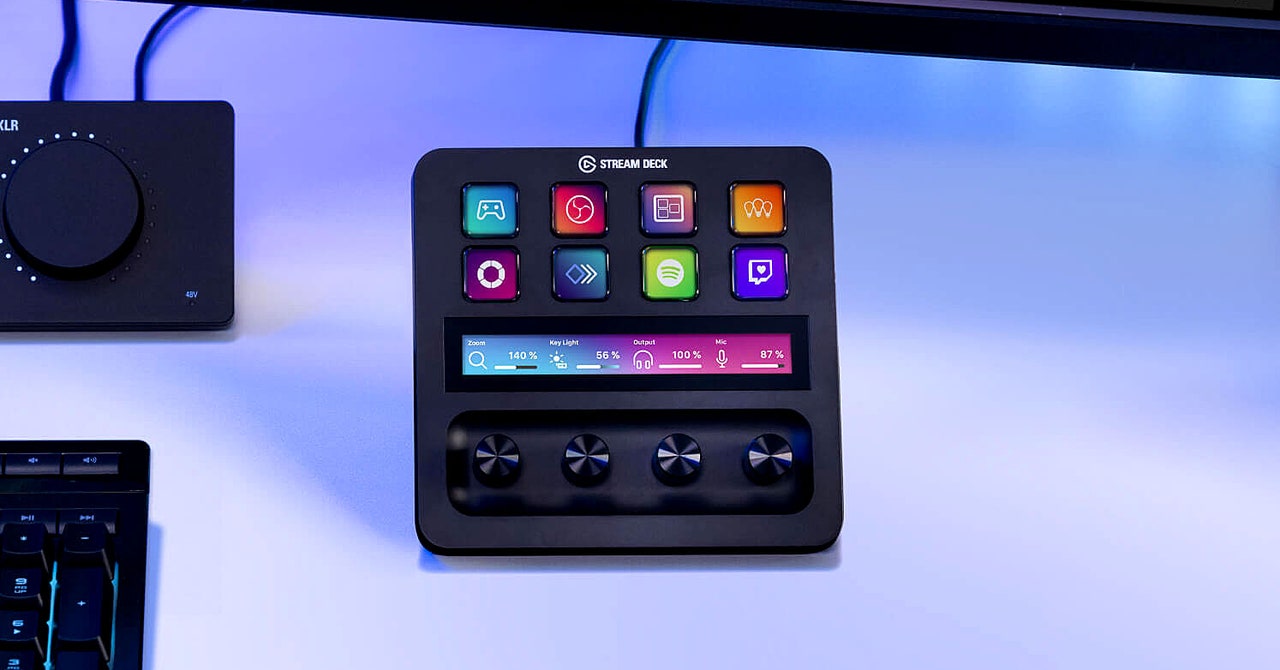Even better, the software includes a Hotkey Switch function that will alternate between two shortcuts. Press it once, it sends one command, press it again and it sends the other, alternating between them. This can be a useful way to build complex toggles, like running one script when you start working and another when you’re done.
2. Activate Mac Shortcuts
Apple’s own scripting tool, Shortcuts, is also powerful, and it’s built right into MacOS. That can be a huge benefit on its own, but an unofficial plug-in lets you activate Shortcuts right from a button on your Stream Deck.
This integration is made by GitHub user Sentinelelite and is not associated with Apple, which is worth keeping in mind. However, you can find the code here. In my testing, it worked pretty well, launching the couple of existing Shortcuts I had without needing a keyboard shortcut that’s not already in use or taking up space in my status bar.
3. Connect to IFTTT
IFTTT is another powerful automation tool that can serve as the glue between multiple services. You can use it to send your Instagram posts to Twitter without the ugly links, add your sleep tracking to Google Calendar, or put videos you like on YouTube into a Spotify playlist. And thanks to its Webhooks integration, you can activate any number of applets (as the service calls them) just by visiting a link.
This makes it easy to integrate with your Stream Deck. Under the System subheading in the app, you’ll find an action called Website. Here, you can enter any URL. When you press the button that you assigned this action to, that site will launch. In this case, it will trigger an IFTTT applet. For example, you could use this to control your smart-home lights, switch your phone to Do Not Disturb, or anything else that IFTTT can do.
4. Control Your Zoom Calls
The last thing you want while on a Zoom call is to fumble for the mute button. This unofficial plug-in can help solve that problem by giving you dedicated buttons to mute your microphone or video, start or stop a recording, and even leave the meeting.
If you’re running the meeting, there are also options to mute everyone in the Zoom call at once, or ask everyone to unmute themselves. These shortcuts work even if the Zoom window itself isn’t in focus, so you can keep your spreadsheets open or keep getting distracted by Twitter without losing the ability to quickly unmute yourself when the boss calls on you.
5. Chat More Easily in Discord
One of the add-ons built by Elgato specifically, this Discord plugin gives you the ability to quickly control a few core features of the chat application. You can mute your microphone or deafen your headphones. There are also options to quickly jump to a preset voice or text channel. In the case of the former, pressing the button will automatically connect your headphones and microphone to the voice chat.
Perhaps the most convenient options in this plug-in, though, are the Push to Talk and Push to Mute buttons. These allow you to temporarily speak or mute yourself while holding down one of the Stream Deck buttons. Having a physical button on hand to reach for—no matter what window is open—so I can speak up in a chat where I’m muted when I need to is the kind of thing that’s made me appreciate having the extra hardware on my desk.
6. Manage Your Music
Most keyboards these days have some kind of multimedia buttons to play, pause, or skip tracks in your music apps, but they’re usually pretty basic. Some of the Stream Deck’s integrations can be much more expansive. For example, the unofficial Spotify plug-in covers the basics but also lets you remove songs from your playlists, change playback devices, add a like to a song, switch to shuffle mode, and more.
Elgato itself also offers plug-ins for Spotify and Apple Music, though curiously only on Macs. These both have more basic functionality, but they at least allow you to toggle shuffle mode and, on Apple Music, hit Love on songs you like.
7. Track Your Working Hours
If you’re a freelancer, have strict work-life boundaries, or are just curious about how much time you really spend staring at spreadsheets, a good time tracker is a useful tool. One free tool for doing this, Toggl, has an unofficial Stream Deck plug-in that makes it easy to start and stop your tracker.
To get it set up, you’ll need to enter your API key, which you can get from Toggl’s preferences page. Once it’s set up, you can press the button to start tracking your time. You can even create multiple buttons to track different tasks and send them to different Toggl workspaces. At the time of writing, you’ll still need to use the Toggle mobile or web app to stop the timer (pressing the button again will just start a new timed entry), but it’s still a handy way to quickly start the clock without getting distracted from what you’re doing.



